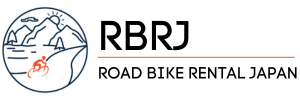
Kyoto Cycling Overview and Guide: Getting around by Bike
This Kyoto Cycling Guide will provide an overview of just about everything you need to know about cycling in and around Kyoto.
Table of Contents
- Why Cycle around Kyoto >
- Kyoto layout >
- Tips and Road Rules >
- Renting a Bike >
- Cycling Routes >
- Bicycle Parking >
- Useful for Cyclists to know >
- Final thoughts >
Why Cycle around Kyoto
Kyoto has some amazing places to ride. You can climb mountains, explore deep forests, pedal along rivers, pass through picturesque towns and cruise around downtown looking for the best espresso in town.
When exploring on the bike you not only see point A and point B, but also the unplanned and unexpected things on the way.
In our opinion, cycling allows you to see much more.
Hidden gems

The crowds in the city and at the main sights can be pretty daunting but luckily, Kyoto has so much natural wonder and charm lurking just beyond the city centre and main tourist destinations.
Riding into the mountains, down side streets, around the quiet suburbs and through the rural farming towns will show you a unique and authentic side to Japan which you simply can’t get from sticking to the well-trodden path.
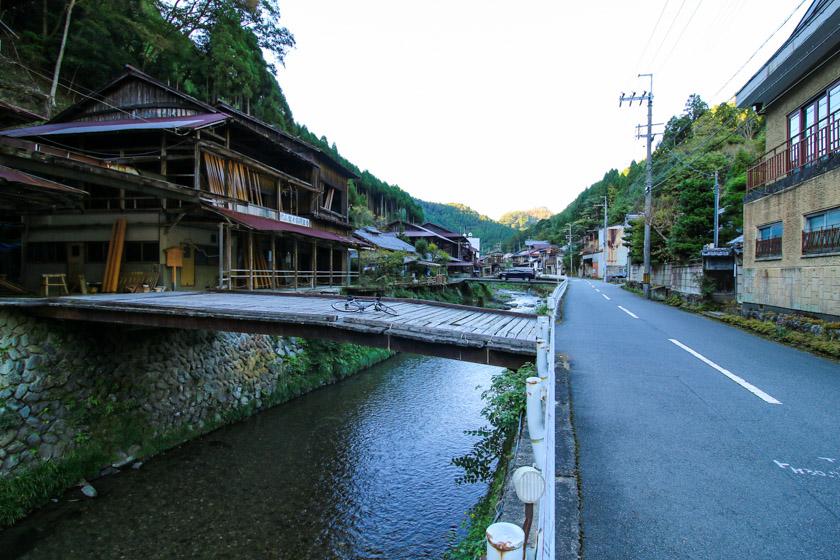
There are so many shrines, temples, rivers and simply stunning snapshots of raw Japan that aren’t in any guidebooks that you literally stumble upon when venturing into rural and isolated areas.
These moments are some of the best and at Road Bike Rental Japan, our mission is to help people experience more of these moments during their time in Japan.
Stunning nature

Japan really is a beautiful country. However, sometimes the world-famous cultural sights and bright neon buzz of the cities can overshadow this.
There are towering and steep mountains, rivers and valleys sweeping below, rural farming villages with the distinct charm only found in Japan, mystic local shrines tucked into corners of the country, vast forests that seem to swallow you whole and oceans and beaches that will have you striping off mid-ride and jumping in for a dip.
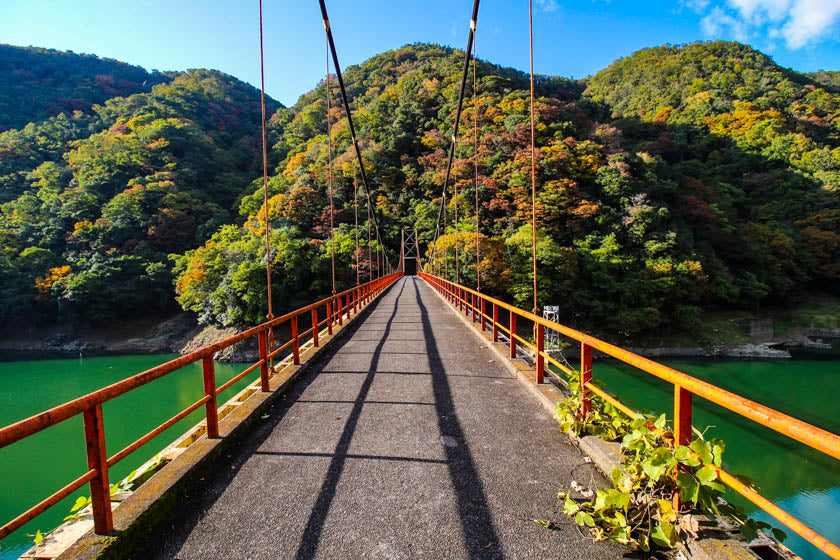
If you catch trains and buses everywhere you can miss a lot of this. However being on a bike gives you the best chance of discovering the real natural beauty of Japan and we’re sure you won’t be disappointed.
Speed

Bikes are faster than walking and therefore enable you to cover more ground with less effort than when walking around.
We agree, there are times in busier areas when it’s better to get off the bike and stroll around but usually the bike will let you get around faster plus you can enjoy the wind in your hair.
Fun, Healthy and good for the Environment

Riding bikes is fun. There are a lot of scientific explanations that try to explain why but when you spin those pedals, get the blood pumping and stir up those endorphins it simply feels good.
Exercise puts you in a better mood and cycling is also a great way to balance out all of the extra eating and drinking you probably are doing on holidays. The food in Japan is epic and the beers flow freely at local restaurants and doing some exercise during your trip can keep you feeling good.
Bike riding also uses minimal fossil fuels and is a pollution free form of transport.
Climate change is the biggest challenge the world is facing and we believe in trying to reduce our carbon emissions in any way we can.
Cycling as a mode of transport is better for the environment and we hope guides like this play a small role in encouraging people to get around Kyoto by bike.
Kyoto Layout
Kyoto is in a valley and is surrounded by mountains on the west, north and east with Mt Atago being the highest peak at 924m.
Kyoto sits southwest of the largest freshwater lake in Japan, Lake Biwa, however none of the lake actually comes into Kyoto prefecture with the entire body of water sitting in Shiga prefecture.
Throughout this guide when we refer to Kyoto, we mean Kyoto city and not the much larger Kyoto prefecture.
Kyoto city is the capital of Kyoto prefecture with the city taking up approximately 18% of the land in the prefecture.
When we think about cycling around Kyoto, it’s helpful to break up the city into sections which are listed below:
- Northwest Kyoto
- Northeast Kyoto
- West Kyoto
- East Kyoto
- Southwest Kyoto
- Southeast Kyoto
- Downtown and central Kyoto
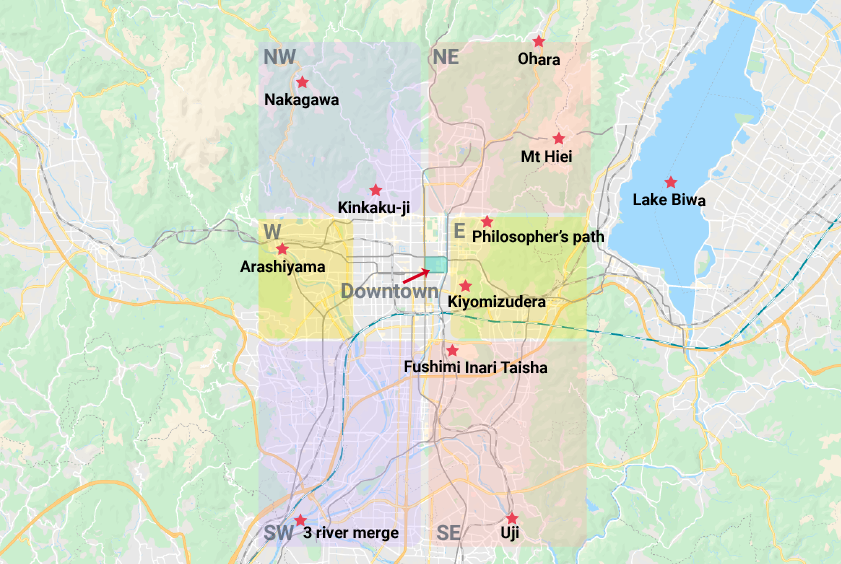
Central Kyoto and Downtown
Downtown is considered to be bordered by Karasuma-dori in west, Oike-dori in north, the Kamo river in the east and Shijo-dori in south.
The area is pretty small – 1km squared – making it easy to walk around.
While not everyone follows the rules, cycling on the below streets are prohibited:
- Kawaramachi-dori, between Oike-dori and Bukkoji-dori
- Shijo-dori, between Higashioji-dori and Karasuma-dori
- Sanjo-dori, between Kiyamachi-dori and Kawaramachi-dori
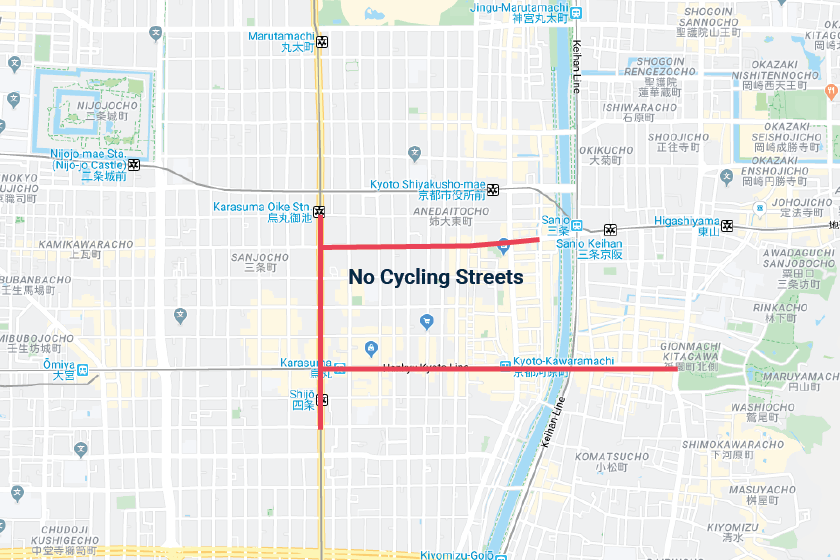
Apart from the prohibited streets (and other streets that are restricted at certain times of the day or during certain events during the year), you can ride around and navigate Kyoto city fairly easily due to the grid layout. It should be noted there is a fair bit of traffic on the roads making peak hours a pretty congested time to cruise the streets.
There are also a lot of traffic lights – especially in the city centre around downtown – making the going pretty slow in some areas.
You’ve also got the people traffic to contend with which is made up of locals going about their daily lives plus the huge number of tourists that come to visit Kyoto every year.
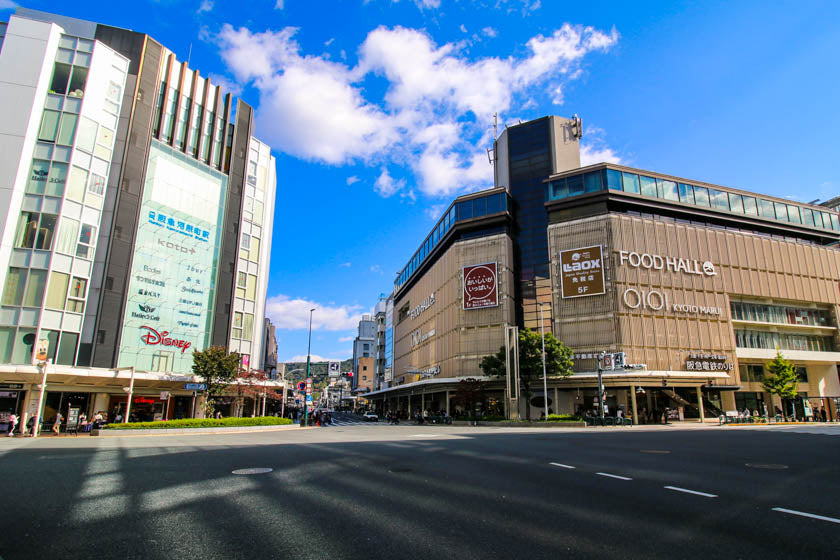
When riding around the city the rivers are a useful way to escape the traffic and pollution on the streets. If you are in the city centre or east Kyoto you can ride along the Kamo river while if you are in the west you can take the Katsura river.
West Kyoto – Katsura river and Arashiyama
The Katsura river in the west is a great starting point to get on the bike and start exploring.
There is a cycling path along the river and the ride has some beautiful moments to take in while cycling.
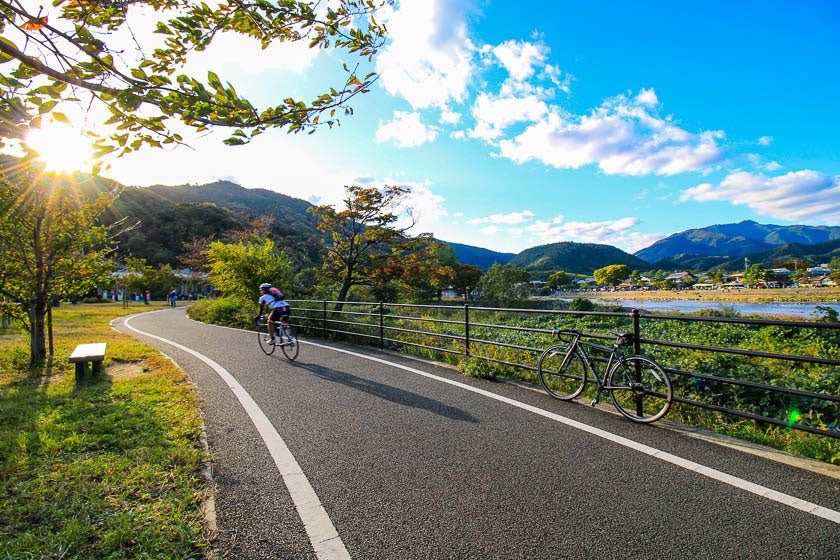
You can start further in the south and make your way towards Arashiyama or start at Arashiyama or Matsuo Taisha and make your way south.
Arashiyama is a special part of the world but like other places in Kyoto it gets very crowded with tourists. The bamboo forest in particular gets very congested so early morning or late evenings are the best time to visit.
One of the best parts about cycling around Arashiyama is not actually cycling at Arashiyama itself, but the river path heading north towards Arashiyama. The mountains veer around ridges as the world-famous area is slowly revealed in the distance.
North Kyoto
We split north Kyoto into Northwest and Northeast sections.
Northwest – Mountains to Umegahata, Nakagawa and more
The mountains in the north are stunning. Offering climbs, descents, postcard ready small towns and crisp sights and smells from the forest and landscape.
The pine trees in Japan are beautiful and as you head into the mountains the vast forests can leave you feeling isolated and into the wild.
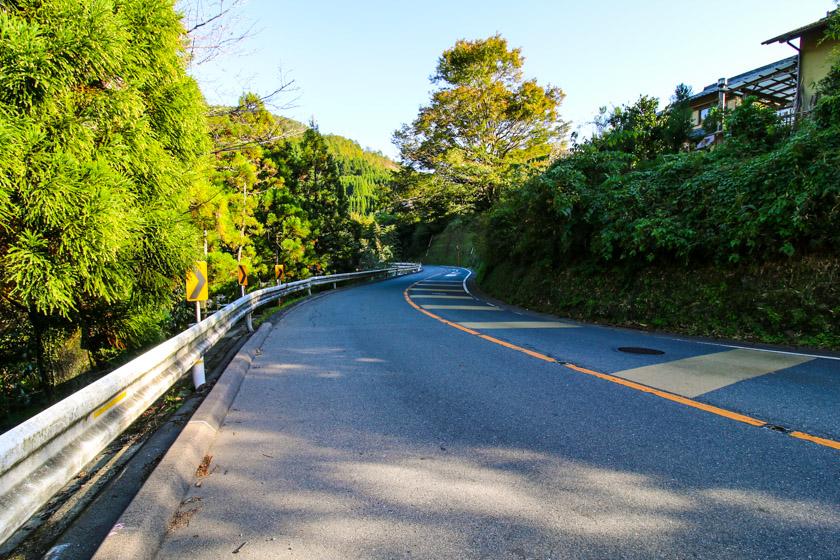
The mountains in the north are easy to get to from the city with the northwest routes usually accessed north of Arashiyama and through Umegahata.
Northeast – Ohara and Mt Hiei and more
There are numerous areas to cycle and explore in the northeast with Ohara being a hub for many of the routes in the area.
Ohara is a simple ride up the 367 just past Takara-ga-ike pond park and Takaragaike station.
The mountain roads also go up, through and over Mt Hiei further to the east.
Mt Hiei is the second highest mountain in Kyoto and there are some serious climbs if you want to push yourself and get the heart pumping.

If you go up and over the mountain you descend to lake Biwa which is also very popular for cyclists.
East Kyoto
East Kyoto is probably considered just the other side of the Kamo river and the area includes some of Kyoto’s most famous sites and visited areas.
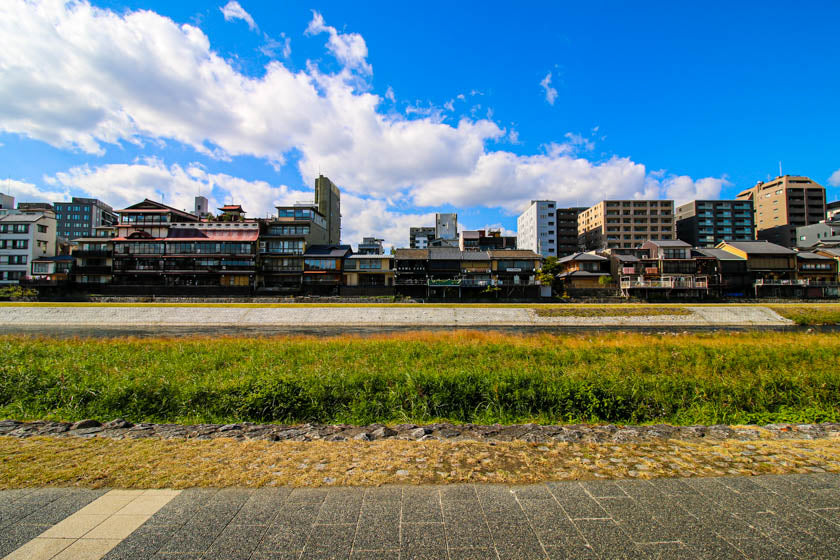
You’ll find the Philosopher’s path directly east of Kyoto University, Nanzen-ji to the south of there and Kiyomizu dera temple further south again.
There is plenty of cycling in the east, with a lot of tourists cruising around the lovely Higashiyama area taking in the sights.
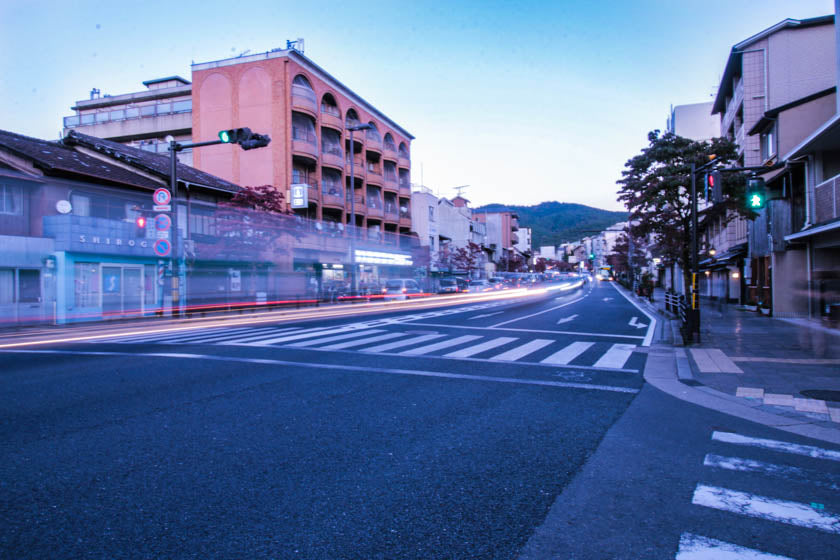
You can take the Sanjo dori up the hill past Keage station and behind Kiyomizudera and eventually end up at Otsu if you like.
There can be a lot of traffic around Shinomiya station, the Kyoto Higashi interchange and along route 1 over to Otsu so avoid peak hours if you can to make for a more enjoyable ride.
South Kyoto
The south is also split into Southwest and Southeast sections.
Southeast – Uji and towards Nara
The southeast routes and areas also offer some wonderful areas for cycling. Fushimi Inari shrine is a beautiful place to visit but you need to walk it so if you want to visit the shrine get there early to avoid the crowds.
The ride over to Uji is one of the must see routes for cyclists wanting to experience some stunning scenery.
The ride to Uji pretty good, with some interesting urban parts but some roads with a bit of traffic. However, once you get to Uji and start heading up the Uji then Seta river any thoughts of traffic will quickly be gone.
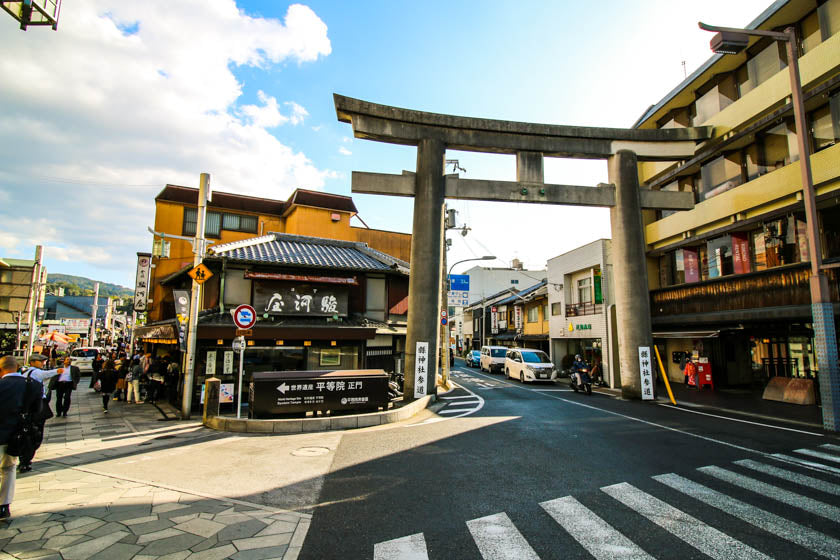
The hill-side road that wraps along the river is spectacular.
The winding roads are pure joy on the bike and the dramatic views down into the river and of the bridges along the ride make for a fantastic cycling experience.
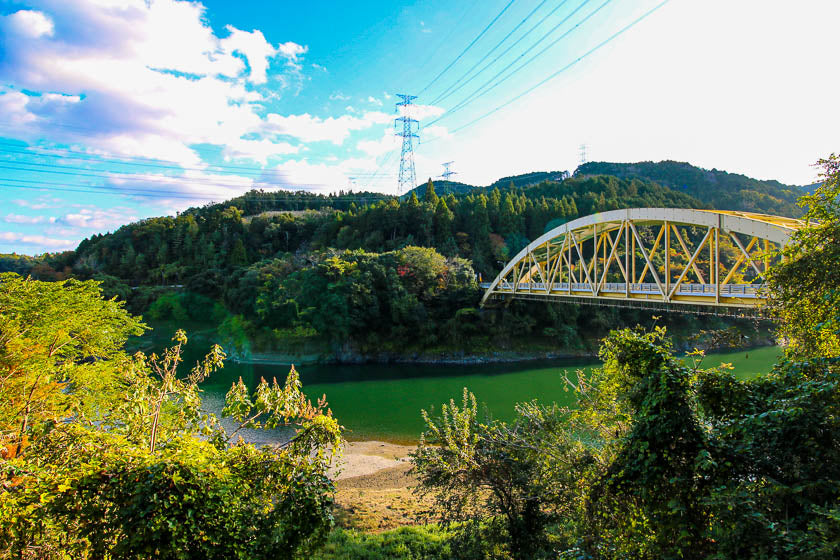
To see the route and read more about the ride in detail please see our Cycling Routes section of the guide.
The southeast is often the access point to riding down to Nara which is a classic ride that won’t disappoint. The route includes thick forests, riverside roads, farms, wildlife (deer in Nara) and some epic climbs.
A link to a Kyoto to Nara loop can also be found in the Cycling Routes section.
Southwest – Katsura river, three river confluence
South Kyoto is also popular for cyclists as this is usually the gateway for cyclists heading to Osaka down the Yodo river or into Nara on the Kizu river.
In the south there is the three river confluence of the Katsu river, Uji river and Kizu river where they all merge and become the Yodo river.
From there you can head down the Kizu river further south to Nara, take the Uji river to the east or jump on the Yodo river and make the journey to Osaka.
Details of routes can be found in the Cycle Routes section of the guide.
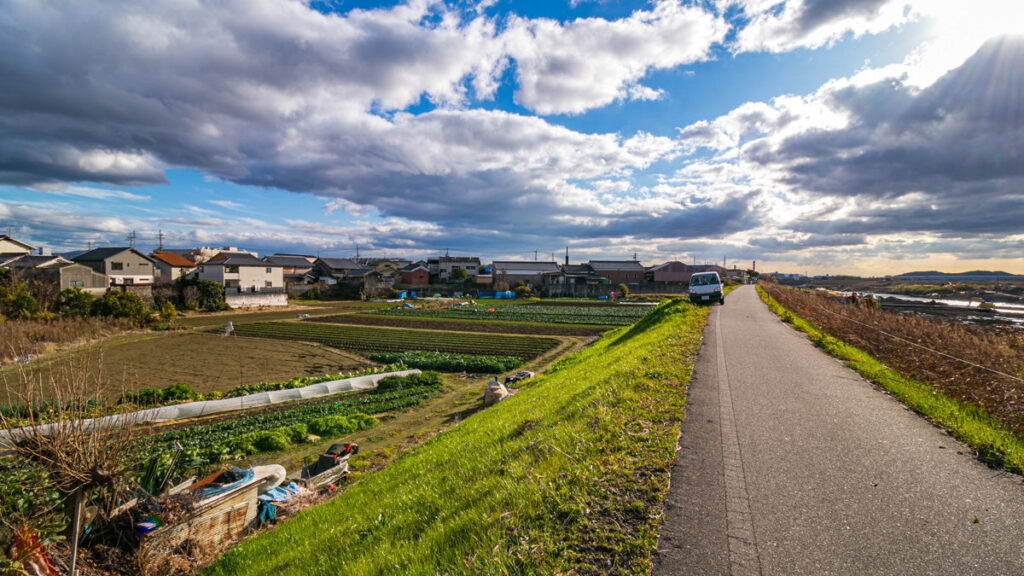
Tips and Road Rules
Ride on the left

Japan’s traffic drives on the left. This is rule number one for cyclists coming to Japan because if you’re from a country that drives on the right, this could take a little bit of getting used to.
Footpath or road?

You should always stay to the left of the road unless there is a dedicated cycling path which you should then use. You can actually cycle on the footpaths / sidewalks in Japan pretty freely but there is actually a law stating that you can ride on the footpath if there is a signpost saying it’s possible.
Having said this, you’ll see a lot of people riding on footpaths in Japan so we don’t think you would ever be stopped by police unless you were trying to cycle through the middle of a really busy thoroughfare for pedestrians
Helmets

Recently Japanese laws have changed requiring all bike riders to wear a helmet. At RBRJ, we always recommend wearing a helmet but you will notice a majority of people riding bikes around the cities and suburbs not wearing a helmet.
To make sure you’re comfortable, you can always bring your helmet from home but if not, most rental shops should provide you with a helmet with the bike rental.
Is riding safe?

I find Japan to be a generally pretty safe place to cycle.
There seems to be much less aggression from the drivers than what you find in the west and drivers tend to understand and watch for cyclists a bit more too. I think this has something to do with the fact that most people driving also ride a bike. They might not be a road cyclists but they probably have a city bike they ride to the supermarket, train station or around their local neighborhood.
Of course, there are still some aggressive drivers in Japan so stay focused and err on the defensive side when riding in traffic and you shouldn’t have any problems.
Renting a Bike
Renting a bike in Kyoto is quite easy. There are a lot of places that rent out the basic city bikes and the daily rates aren’t that expensive.
Hotels also sometimes have a bike rental service for guests so check with your accommodation as you might have a bike rental included with your room.
The basic bike that carries most of the local population around for their day-to-day lives is called a Mamma-chari. This translates to a Mother’s bike or something similar and the bike usually is single speed with a basket on the front.
If you would like a bike with a few gears there are a few options around with a lot of them having flat handle bars.
For road and sports bikes the choice is much more limited.
At RBRJ, we specialise in high-performance road and touring bikes and also have a solid range of touring bikes.
To see the range of road and touring bikes please see the below link:
Cycling Routes
There are a lot of different areas you can cycle around in Kyoto. From staying closer to the city and suburbs to getting out of the city and finding some isolated forests and quiet country towns.
To give you an idea of generally where cyclists ride in Kyoto, check out the below Heatmap from Strava – the red lines indicate cycling activity.
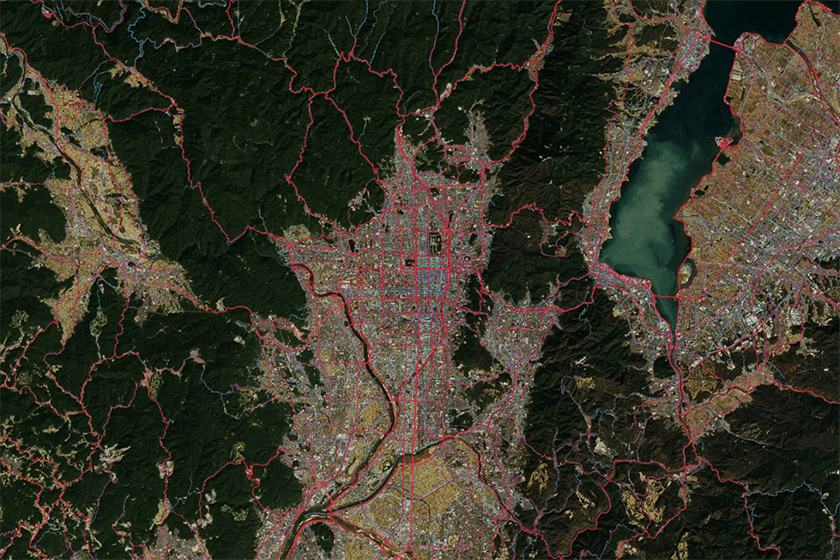
Below are some example cycling routes that are divided into:
- Shorter routes
- Medium-length routes
- Longer routes
Shorter Routes
Sanjo to Philosopher’s path
Distance: 4.6km
Elevation Gain: 84m
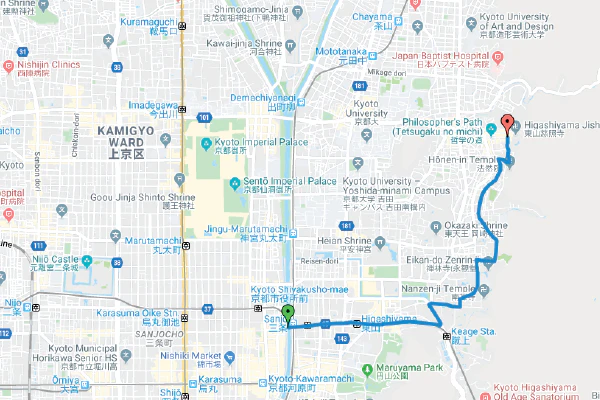
Arashiyama to 3 river confluence
Distance: 20km
Elevation: 93m

Medium-length Routes
Northeast and Northern loop – Ohara and Kamo
Distance: 40.27km
Elevation: 474m
View route on Google maps >

Northwest mountains ride – Umegahata, Nakagawa
Distance: 58km
Elevation Gain: 865m
View route on Google maps >
Link to route guide and blog

Kyoto to Osaka – Katsura and Yodo rivers
Distance: 49km
Elevation: 308m
Link to route guide and blog >

Longer Routes
Kyoto to Uji to Otsu loop – return to Kyoto city
Distance: 70km
Elevation Gain: 903m
Link to route guide and blog >

Kyoto and Lake Biwa loop
Distance: 218km
Elevation: 1,184m
Link to route guide and blog >

Bicycle Parking
Considering the amount of people that ride bikes in Kyoto the bike parking isn’t particularly good.
When parking your bike in Kyoto you pretty much have the below choices:
- Free spots
- Paid spots
- Spots you should always avoid
Free spots
In less busier areas, bikes can generally be parked on the footpath and roads for free without any problems. For example, if you stop at a restaurant for lunch you can usually park your bike out the front while you eat no worries.
The restaurant or shopping centre might even have a bike parking for customers.
A key point here is that you park your bike for a limited time. If you head into the convenience store, buy a couple of things then get back on your bike pretty quickly you will probably be fine.
But, if you leave your bike for hours or worse still, days, the chance of your bike being taken from the seemingly safe and free spots increases.
Paid spots
In the city you’ll find locked parking bays which you are free to use most of the time. You simply roll your wheel in, wait for it to lock then you can head off. When you get back you put in your bike parking number in the machine and pay the small fee which is usually 100 or 200 yen.
Some bike parking places are mainly for owners that pay for a monthly or yearly spot but some of these places also accept daily parking for a small fee.
No parking
However, in busier parts of the city there are places where you shouldn’t park your bike, even for a few minutes. Places such as outside of main train stations, department stores, office buildings in the CBD and high-end shops are pretty regulated and you will find you will get a warning tag quickly followed by your bike taken if you don’t move it ASAP.
If your bike is taken by the city bike sweep check the ground for a piece of paper stuck on the ground that will tell you where your bike has been taken. If you go there with your bike key you can get your bike back at a fee though.
We usually recommend being cautious with parking, especially if you have a more expensive bike. If there is a paid parking bay close to your hotel, it’s a good idea to use it and also use your bike lock.
It’s worth asking your hotel if there can store your bike inside or if they have bike parking. Some hotels do but a lot of hotels will ask you to find bike parking outside so If that’s the case, ask them if there is a paid bike parking close by.
Useful for Cyclists to Know
Below is some information which is useful to know or might come in handy while cycling around Kyoto.
Shops to buy gear or get repairs

Y’s Road Kyoto
Y’s road Kyoto has a great range of bikes and parts and the staff are also pretty knowledgeable too. There is basic English assistance (depending on the staff member) and if you need repairs they are reliable and also not that expensive. Shop location here >
To be honest, the website is a bit of a mess and could really be improved a lot. Your best bet is to visit the store and have a look at the range and speak to staff if you need.
Best Seasons for Cycling

The best seasons for cycling around Kyoto are Spring and Autumn. It’s still possible to cycle in Summer and Winter but be careful of extreme heat and humidity in Summer and also watch out for sub zero temperatures in winter which brings snow and dangerous icy conditions on the roads.
Spring
The weather in spring is beautiful and if you’re lucky you might even catch some of the cherry blossoms while riding.
March can still be a bit chilly but we find March, April and May fantastic for cycling. May is a fair bit warmer than March but remember cherry blossom season brings crowds too so be sure to book early and maybe avoid the peak sights if you can. Head to some rural or mountain rides and you’ll probably witness amazing cherry blossoms around the countryside that will make you stop and appreciate the sight.
See the below link for the temperatures in Kyoto in April 2023 >
Autumn / Fall
Autumn is also fantastic for cycling and here at RBRJ, it’s probably our favourite. The autumn colours are spectacular and they also last longer than the cherry blossoms meaning you have a better chance of catching the beauty of the changing colours.
The season probably lasts a bit longer than Spring in terms of good weather for cycling too. September can still be very hot at the start of the month but it starts cooling down and from mid September right through to December Japan is prime for getting out on the bike.
See the below link for the temperatures in Kyoto in October 2023 >
Summer
You can also cycle in Summer but if you really feel the heat, Summer might be too much for you. The humidity plus the heat can make for some scorching days in the sun. If you do get on the bike, be careful and make sure to take breaks and get enough water.
See the below link for the temperatures in Kyoto in July 2023 >
Winter
Winter can also produce some lovely days for cycling and just the other day, we rode around in 13 degrees in the sun and we all thought it was ideal cycling weather. However, the weather can get very cold and if you don’t have the right gear, you can get very uncomfortable fast.
Not to mention the chance of snow and ice so be careful on the roads and try to check the weather in advance to plan your days.
Of course, the higher the altitude the more likely there is going to be snow and very dangerous ice on the roads so if you are heading into the mountains keep a good eye out for ice and snow on the roads.
See the below link for the temperatures in Kyoto in January 2023 >
Bike Transport

If you want to take your bike on the train you can, however you need to cover it completely. To see our full blog post on taking your bike on the train in Japan please see the below link on our Osaka site:
Taking bikes on trains in Japan – guide and instructions on using a train bag >
Third party Insurance

In more and more prefectures across Japan third party property and person insurance is becoming mandatory for cyclists. Not only for local cyclists but also for visitors from overseas.
If you rent a bike check with the rental shop that the bike has third party insurance and if they don’t, we advise you find a place that does.
If you are bringing your bike from home you also need to insure yourself which can be tricky as it’s usually done in Japanese. 7/11 offers a pay as you go insurance and you can buy it from their kiosks in-store.
Ask the staff if they can help you get the insurance and hopefully you’ll get some English assistance.
All RBRJ bike rentals are covered for third-party property and person. You can find more details about the insurance from the below link:
Emergency contacts

While in Kyoto and especially if you are cycling there is a chance that you might need medical services at a stage. While Japan is a very safe country and cycling here is also pretty safe, it’s good to prepare in case of an accident or injury.
A few points to be aware of are:
- Know your local hospital or clinic
- Make sure you have travel insurance to cover medical bills
- Don’t assume the hospital is open late at night or on weekends
- Dial 119 for fire and ambulance
- Dial 110 for police
Know your local hospital
Firstly, it’s good to check where your local hospital is.
If you have a more severe medical problem a larger hospital is better, however for common colds and less serious problems you can see a Doctor at a local clinic who will refer you to a hospital if they think it’s necessary.
Travel Insurance
Make sure you come with travel insurance, especially if you plan on doing any cycling. Health care in Japan is excellent and also very affordable, however if you don’t have any insurance you’ll pay 100% and if it’s complicated treatment it can get very expensive.
Don’t assume hospital is open
Some hospitals and clinics are closed late at nights and also on weekends. Check on Google whether the hospital is open first before going there.
Emergency Numbers
In Japan, there is a separate number for ambulance and fire, and for police. Dial 119 for ambulance or fire and 110 for police.
Usually there is English assistance on the phone but try and relax and speak slowly to help the operator understand your situation.
- 119 for fire and ambulance
- 110 for police
Final Thoughts
We think getting around on a bike is the best way to see Kyoto and we hope the information in this guide is useful if you decide to go cycling while in the ancient capital.
This Kyoto Cycyling overview and guide will periodically be updated with new information for cyclists so if you have any ideas or useful links that we’ve missed, let us know in the comments and we’ll try and include them.
Enjoy the time cycling around Kyoto and if you have any questions please get in touch with us anytime!
